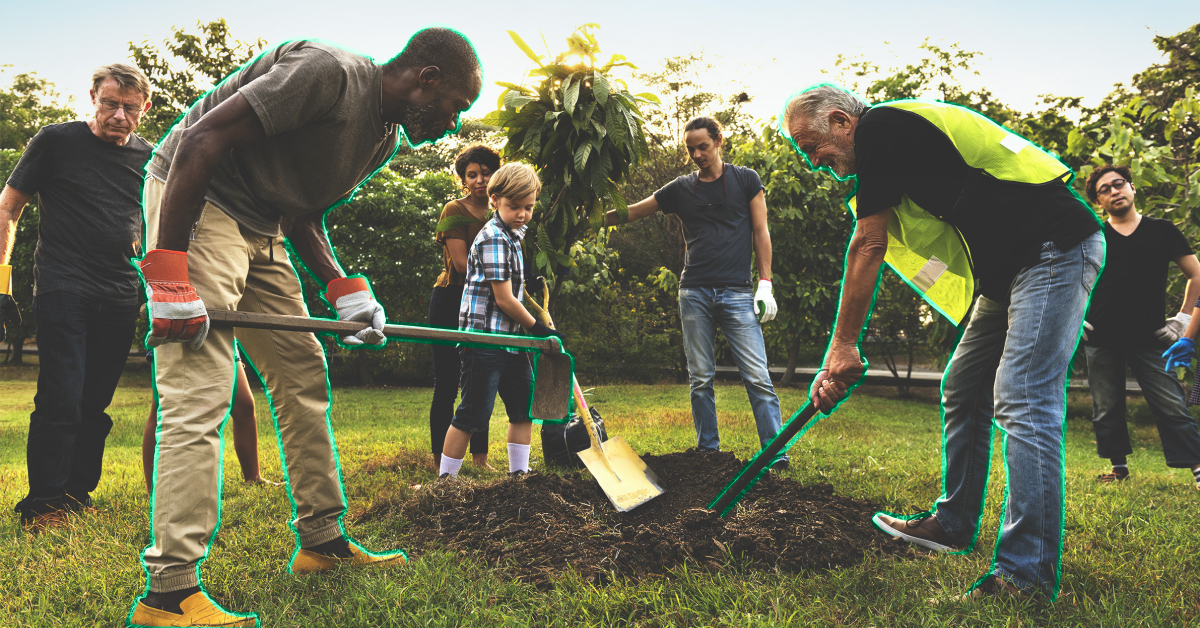5 Tips for Citizen Engagement in Local Government

Rory Vinokor
Director of Channel Partnerships
Smart cities are no longer just about using technology to increase operational efficiency, like optimizing traffic patterns or parking management. Nowadays, it’s about leveraging communication and civic engagement technologies to bring residents on board with a community-driven approach, where residents form an integral part of the city’s design and development.
Since the pandemic, the role of civic engagement has become even more important as COVID-19 has strained the capacity of local governments to provide services and address the increasingly complex challenges cities and counties continue to face. Identifying the tools and technologies available, like civic engagement apps, can help local governments engage with all residents, including the multiple different communities that a city serves.
The benefits of community engagement can be distilled into one bottom line: the value of resident input. Citizen engagement in local government is a way to gather community input in order to better understand resident needs and priorities – and ideally in doing so, to get people more invested in their communities – whether it’s on the neighborhood, city, county, or community-group level.
Increasing civic engagement
According to Thomas Ehrlich (Civic Responsibility and Higher Education), “Civic engagement means working to make a difference in the civic life of our communities and developing the combination of knowledge, skills, values, and motivation to make that difference. It means promoting the quality of life in a community, through both political and non-political processes.” Stated more simply, citizen engagement refers to broad participation by residents in government and public life. It means strengthening democracy and governance at the local level, resulting in a more inclusive community that fosters the values of all stakeholders.
Furthermore, there is a strong connection between civic engagement and improving residents’ quality of life. We’ve seen time and again in our data that residents who feel involved in city decisions are more inclined to express positive sentiment toward their city, and that citizen engagement has such great potential to make a difference, as proven during the pandemic. Now that things are opening up and we’re moving back “offline,” local leaders are working harder than ever to maintain higher levels of engagement and find impactful and exciting ways to increase engagement.
How to increase civic engagement
We’ve listed five different ways cities can encourage civic engagement within a community:
1. Cultivate Citizen Leadership from a Young Age
It starts with education. Instilling values such as democratic participation and engagement from a young age is a great way to foster ongoing engagement at the local level. Those youth are more likely to become active adults and community members, wherever their paths may take them.
One city initiative we love in Columbia, South Carolina, targets college students. The City’s Mayor’s Fellows program gives undergraduate and graduate-level students a chance to see for themselves how local government works by offering first-hand civic experience in City Hall for class or internship credit. Students assist staff, conduct research in areas that affect departments or agencies in Columbia, help with special projects, and more.
2. Apps for Civic Engagement
Civic engagement and fun might not sound like they go together. But believe it or not, they can. Communities that invest in finding ways to make civic engagement exciting and enjoyable find that residents are drawn to participate, and they “give back” even more. Apps for civic engagement are a key part of this.
A great example of these types of apps for civic engagement can be found in Boston, Massachusetts, where bad drivers plagued the streets. The City of Boston developed an app that assesses driver behaviors, like harsh braking and phone distraction and increases self-awareness of driving habits. Participants received a score based on their actions and were ranked against other drivers in the metro area.
Sticking to the adage “there’s an app for that”, the City of Columbus, Ohio, created a civic engagement app that tries to cover most of the areas where residents can engage with the city through the app. You can see bus schedules, report potholes, and link to more citizen engagement programs like green and neighborhood initiatives.
3. Make It Easy to Get Involved
Residents are most likely to participate when it’s easy to get involved. This means cities need to put effort into making citizen engagement easier. And one of the best ways of achieving this is leveraging technology to make engagement more accessible. Apps for civic engagement are still one of the best ways to do this. GovTech influencer and Pulitzer Prize-winning journalist Karen Hunter knew this when she asked Hack Reactor grad Justin Webb to build a new app to connect her listeners to content and causes they care about. Other apps for civic engagement help with communicating public or emergency information, crime tips, and volunteer opportunities, to name just a few.
Additionally, community engagement can help increase trust and transparency – creating communication lines and showing residents that they are heard. Community engagement also helps with community building. Depending on where in the spectrum a community engagement initiative falls, citizen engagement practices can include collaborations with local groups, NGOs, community leaders, and more – and can transform residents into more active (and ‘engaged’) citizens.
4. Don’t Ignore the Amazing Force of Resident Capacity
Residents have the power to do fantastic work when they pool their resources together on issues they are passionate about. Harnessing that power can make a real change in a city.
One city where you can really feel what residents have achieved is Chicago, Illinois, where a group of twenty residents operate a civic institution called Chi Hack Night that runs civic projects and events. The mission of the organization is to inspire and promote civic engagement and technology, and its values include everything from promoting transparency and accountability to advocating for justice and positive social change. The group has grown in size and scope and Chi Hack Night has become a fully incorporated, membership-driven non-profit organization that is committed to using the power of civic engagement to improve quality of life in the city.
5. Bring City Hall to the Community
City residents will be more inclined to participate if you can bring City Hall to them, rather than expecting them to go to City Hall. One way of achieving this level of citizen participation is, of course, online town halls, which were popularized during the pandemic. Live streaming city council meetings through forums such as Facebook or Twitter is another approach to online meetings – and was becoming much more common even pre-pandemic. Kirkland, Washington, is a great example of “going to the people” – providing free, inclusive events to expand civic engagement, and increase access to services. But another way is to go one step further and offer free and fun events where residents can participate in discussions in a more informal environment. That’s what Mayor Libby Schaaf did in Oakland, California. Mayor Schaaf ran a “Mobile Mayor” program where she set up shops in different parts of the city, including local cafes and other hangouts, to literally bring City Hall out to different parts of the community.
May the force be with you (via citizen engagement)!
As Bloomberg Cities points out, today’s cities are looking for new and exciting ways to deepen connections with their residents, and are opening up to new forms of collaboration and taking advantage of the talent, energies, and insights of local volunteers.
That’s because City Halls have discovered a plain and simple fact: once residents are more engaged, they’re a powerful force. Local governments are realizing the need to focus on empowering residents and encouraging them to get involved. There are clear ways to improve civic engagement: by cultivating resident leadership, gamifying civic life, making it easy for residents to get involved, appreciating the amazing force behind resident capacity, and bringing City Hall to the community.
Moreover, residents are often the most familiar with the issues they’re really facing. With input from residents, cities can work more strategically to address pain points. Not only that, but once pain points are addressed, resident sentiment becomes more positive. Residents feel that city officials are taking them seriously. It’s a win-win: better services for residents, better sentiment toward City Hall, and better strategies for future city initiatives.
Citizen engagement in smart cities
In today’s world, the force of citizen engagement in local government is also critical to the success of smart cities. Where it used to be more top-down, it’s increasingly bottom-up.
A “smart city” is a city that uses technology for higher efficiency, better communication, and better governance. Smart cities are growing – from big to little – and as cities integrate technology, citizen engagement in smart cities is also using technology tools to meet residents where they are – online.
Government transparency has especially been impacted by smart cities. What might make a smart city so “smart” is data! Smart cities today can now gather more data to make decisions, spot trends, and even measure key performance indicators (KPIs). Cities can now gather data beyond traditional data sets like around traffic patterns and 311 response time; they can also gather and measure resident feedback data.
One great example of a city using resident feedback data is the City of Houston, Texas. The City noticed that there was a spike in discourse volume about traffic in the City. Using smart city solutions, like Zencity, helped them get to the core of the issue and understand exactly what the conversation was about and how to solve the problem. Read the full case study here.
Houston is also a smart city. Zencity sat down with their Chief Innovation Officer to hear about their smart efforts and their vision for making Houston not just a smart city but “the” smart city by using Zencity’s data and analytics platform. For Houston, understanding community feedback around its broader smarter-city strategy is part and parcel of the City’s success. Measuring resident sentiment towards different smart initiatives is an integral part of being “smarter” in a way that improves services and quality of life for residents. Read the full interview here.
%20copy-1.png?width=544&height=120&name=Logo_black%20(1)%20copy-1.png)



